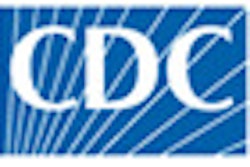
The low rate of high-risk oral human papillomavirus (HPV) found among adult patients in a pilot study conducted by researchers from the University of Nevada, Las Vegas (UNLV) is comparable to those of other studies of HPV prevalence (BMC Oral Health, October 10, 2011).
But the few who tested positive for HPV were Hispanic women, reflecting the growing rate of oropharyngeal cancer among U.S. minorities, despite overall declining rates, according to the study authors.
Only four of the 151 healthy adult patients who were treated at dental clinics operated by UNLV between June 2 and October 1, 2010, tested positive in saliva samples for high-risk strains of HPV, they noted.
"HPV has been implicated as the cause of virtually all cervical cancers worldwide," the study authors wrote.
Recent epidemiologic evidence suggests that HPV may also be an independent risk factor for oropharyngeal cancer, they added: HPV has been found in three times as many precancerous oral lesions and almost five times as many oropharyngeal cancers compared with normal oral mucosa.
Of all HPV types, the high-risk strains HPV16 and, to a lesser extent, HPV18 are most commonly identified from oral biopsies.
"Although the traditional risk factors for developing oropharyngeal cancer remain tobacco use and heavy alcohol consumption, other risk factors, such as HPV, may play significant roles in determining whether it develops and how quickly it may progress," the researchers wrote.
Modulating the malignancy process
The low rate of high-risk HPV in normal tissues and much higher prevalence in precancerous and cancerous oropharyngeal lesions suggest that HPV may modulate the malignancy process in developing or established oropharyngeal tumors, as has been observed in studies of HPV infection in other developing cancers, the study authors noted.
For example, recent epidemiologic studies show that patients with HPV-positive oropharyngeal tumors had much better survival rates and therapeutic response rates compared with patients with HPV-negative oropharyngeal cancer.
International studies have found HPV rates in healthy biopsy samples ranging from 0 to 15%, while saliva tests reveal HPV rates between 2.8% and 25%. But U.S. HPV screening studies on healthy adults and oropharyngeal cancer patients have reported much lower rates, between 1.3% and 7%.
Based on these varying study results, the UNLV researchers wanted to screen for the most prevalent high-risk HPV strains, HPV16 and HPV18, in normal healthy adults.
Nevada reported growing rates of oropharyngeal cancer between 1997 and 2005, despite declining rates of tobacco and alcohol use in the state and declining rates of oropharyngeal cancer nationally, the authors noted.
The number of females and males in the UNLV study was roughly equal (52.3% and 47.7%, respectively) and not significantly different than the overall clinic population. Slightly more white patients were in the study sample (48.3%) than in the overall UNLV dental clinic population (40.8%). In addition, slightly fewer 18- to 64-year-olds were in the sample (80.8%) than in the overall clinic (85.3%).
Three of the four Hispanic women patients who tested positive for HPV16 were between 18 and 64 years old; one sample came from a patient who was older than age 65. There were no false positives or false negatives among patients, who were tested between June and October 2010.
Researchers used saliva tests after prior screening attempts at UNLV clinics failed due to patient concerns about blood testing, they said.
Comprehensive analysis needed
The researchers found a 2.6% prevalence rate of high-risk oral HPV among the study participants, which is virtually the same as the most recent multinational studies of healthy, cancer-free adults (3.1% to 5%).
Although the results of this study found oral HPV infection only among four patients, who were minority and female, the vast majority of female and minority patients in this study had no evidence of oral HPV infection, the researchers noted.
No high-risk strains of HPV18 were found, a finding that is similar to other studies that suggest HPV16 may account for the overwhelming majority of HPV-positive oral samples that have been found, they added.
Recent studies have shown that rates of oropharyngeal cancer haven risen sharply among minority women in the U.S., and the corresponding results of the present study suggest the need for a comprehensive analysis of this population, the researchers concluded.
"This may be explained, in part, by higher rates of tobacco and alcohol use, but may also be attributable to other factors, including education, income, stress, diet, health literacy, and exposure to oral infectious agents," they wrote. "This pilot study provides preliminary information about oral HPV prevalence, and the results suggest that further investigation may be warranted, particularly in light of the health disparities facing both females and minorities in Nevada and the U.S. in general."



















